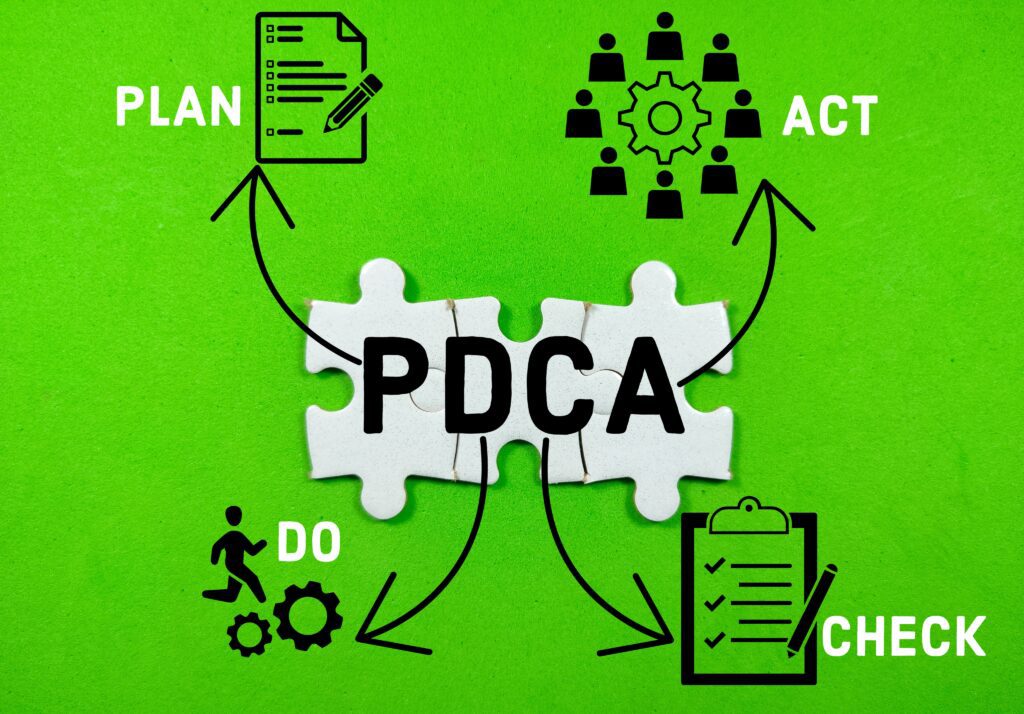The Best Continuous Improvement Tools for your Business
Organizational health-the adaptive, self-renewing capacity of an organization built upon aligned management practices, employee engagement, and a robust culture-is an indispensable element of a thriving company. Like a medical checkup, an organizational health assessment is a proactive approach to ensure the well-being of your business. Here’s why these assessments are vital to a company’s success.
1) Kaizen
Kaizen is a concept referring to business activities that continuously improve all functions and involve all employees from the CEO to the assembly line workers. It also applies to processes, such as purchasing and logistics, that cross organizational boundaries into the supply chain. By improving standardized activities and processes, Kaizen aims to eliminate waste. Kaizen was first implemented in several Japanese businesses during the country’s recovery after World War II and has since spread to businesses throughout the world.

2) Arrowhead’s Organizational Health Assessment (OHA)
Arrowhead’s OHA is a unique tool that provides a comprehensive analysis of your company’s operational health. It offers expert-driven advice from experienced subject matter experts to efficiently address organizational health issues. The intuitive dashboard makes it easy for users to understand and engage with the data and results. With multiple pricing tiers and customizable solutions, Arrowhead’s OHA caters to the needs of different businesses. The innovative engagement with assessment results makes the product unique, potentially increasing user satisfaction and retention. The live dashboard expedites internal feedback, enabling companies to adopt a more informed, metric-based, and efficient approach to strategic planning.

4) Total Quality Management (TQM)
TQM is a management approach to long-term success through customer satisfaction. TQM focuses on the development of products and services that meet the needs and exceed the expectations of key customer groups. This involves the product itself, its functionality, attributes, convenience, and even the means by which the information about a product is received by a client. TQM necessitates that the company maintains this quality standard in all aspects of its business.
4) Process Mapping
Process mapping is a workflow diagram to bring forth a clearer understanding of a process or series of parallel processes. The process map visually describes the flow of activities of a process and is an essential tool for organizations wanting to improve efficiency. Process mapping helps identify bottlenecks, repetition, and delays. It is a valuable tool for understanding and improving business processes.

5) Plan-Do-Check-Act (PDCA)
PDCA is a four-step management method used in businessfor improvement. PDCA is a simple but powerful method for problem-solving and managing change, promoting a culture of continuous improvement within organizations. The cycle involves four stages: Plan (identify and analyze the problem), Do (develop and test a solution), Check (measure the results and compare them against the expected outcomes), and Act (implement the solution fully or start the cycle again if the solution needs refining).

6) Root Cause Analysis (RCA)
RCA is a method of problem-solving used for identifying the root causes of faults or problems. It is widely used in IT operations, telecommunications, industrial process control, accident analysis (e.g., in aviation, rail transport, or nuclear plants), medicine (for medical diagnosis), healthcare industry (e.g., to identify factors that cause a near miss or major injury), etc. A factor is considered a root cause if removal thereof from the problem-fault-sequence prevents the final undesirable outcome from recurring.
7) Business Process Reengineering (BPR)
BPR is a business management strategy, originally pioneered in the early 1990s, focusing on the analysis and design of workflows and business processes within an organization. BPR aims to help organizations fundamentally rethink how they do their work in order to improve customer service, cut operational costs, and become world-class competitors. BPR seeks to help companies radically restructure their organizations by focusing on the ground-up design of their business processes.

8) Overall Equipment Effectiveness (OEE)
OEE is a measure of how well a manufacturing operation is utilized (facilities, time and material) compared to its full potential, during the periods when it is scheduled to run. It identifies the percentage of manufacturing time that is truly productive. An OEE of 100% means that only good parts are produced (100% quality), at the maximum speed (100% performance), and without interruption (100% availability). Measuring OEE is a manufacturing best practice. By measuring OEE and the underlying losses, important insights can be gained on how to systematically improve the manufacturing process.
So, if you’re ready to take your company to the next level, consider investing in Arrowhead’s OHA. It’s not just about improving your processes; it’s about setting your business up for long-term success. Start your journey towards continuous improvement with Arrowhead’s OHA today.
Again, you need more than great performance to get ahead!
Click here to sign up for our OHA!

